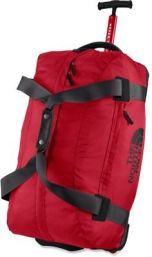Whenever I trave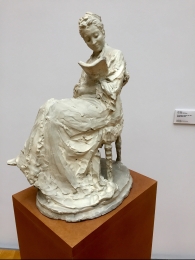 l, I begin with a list of books to read on the journey. The trip to the Rhineland and beyond involved such a list but with a special focus. I’ve embarked on a project to write about the history and development of writing, and where better to focus than on the origin of the printing press—in Mainz, Germany. Gutenberg worked for decades to create a pr
l, I begin with a list of books to read on the journey. The trip to the Rhineland and beyond involved such a list but with a special focus. I’ve embarked on a project to write about the history and development of writing, and where better to focus than on the origin of the printing press—in Mainz, Germany. Gutenberg worked for decades to create a pr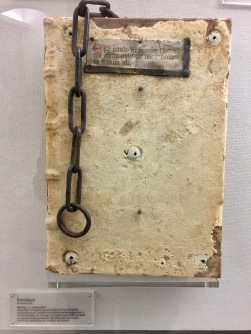 ess that would produce editions of The Bible that were correct and uniform. The high level of secrecy and the enormous amount of risk—financial as well as personal—are detailed in the novel, Gutenberg’s Apprentice by Alix Christie (2014). Why risk? At the time, sacred documents were created by scribes; a single Bible might require three years’ time to complete. Books were of such value that they sometimes came with chains to secure them.
ess that would produce editions of The Bible that were correct and uniform. The high level of secrecy and the enormous amount of risk—financial as well as personal—are detailed in the novel, Gutenberg’s Apprentice by Alix Christie (2014). Why risk? At the time, sacred documents were created by scribes; a single Bible might require three years’ time to complete. Books were of such value that they sometimes came with chains to secure them.
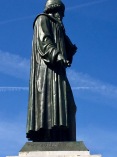
Gutenberg in Mainz Market Square
Might a printed version without the touch of the human hand, inspired by God, actually be the work of the devil? Gutenberg and his associates might very well have been burned at the stake for their audacity.
We learned at the Gutenberg Museum that increased access to books and literacy drove the creation of spectacles. The Pharmacy Museum in Heidelberg Schloss noted that printed books helped standardize recipes for medicines with the printing of ingredients and depictions of botanicals. The impact of the printing press cannot be underestimated. No doubt, this is why Gutenberg has been termed “The Man of the Millennium.” 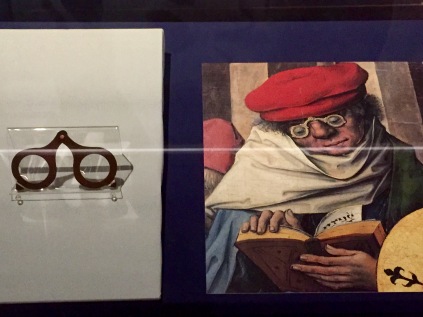 Mainz, a center for trade in the Middle Ages, is a charming town on the banks of the Rhine, populated by numerous churches, historic buildings, and a stellar boat museum.
Mainz, a center for trade in the Middle Ages, is a charming town on the banks of the Rhine, populated by numerous churches, historic buildings, and a stellar boat museum.
It was also the site of a British prisoner of war (POW) camp in World War I, described in Alec Waugh’s The Prisoners of Mainz (1919). Yes, this is Evelyn Waugh’s brother. It is one of those British stiff upper lift narratives of the time that almost makes the war seem like a lark—even while describing gruesome realities of The Front. World War II and its aftermath but on its distaff side—the women—is the focus of Jessica Shattuck’s best-selling novel The Women in the Castle (2017). The widows of those men in the plot to kill Hitler band together to survive.
And speaking of survival, Illuminations, a novel about Hildegard von Bingen by Mary Sharratt (2012), brings to light the amazing woman of the Middle Ages, who was dedicated to the church by her family when only eight years old, and who became a major figure as a Benedictine abbess and composer. Her compositions continue to be performed today.
Mark Twain also makes an entrance with his voluminous travel journals, in particular, The Innocents Abroad and A Tramp Abroad (both can be downloaded for a modest price). His entries on Heidelberg are particularly entertaining. He visits the student “jail” on the Heidelberg University campus—where errant students are housed in somewhat barren surroundings but which became a badge of honor for them, as well. The current tour of the jail reveals an impressive amount of graffiti left by its inmates, who apparently also partied during their brief internment. It ends, naturally, in a shop where tourists can purchase SWAG and hoodies emblazoned with Heidelberg University.
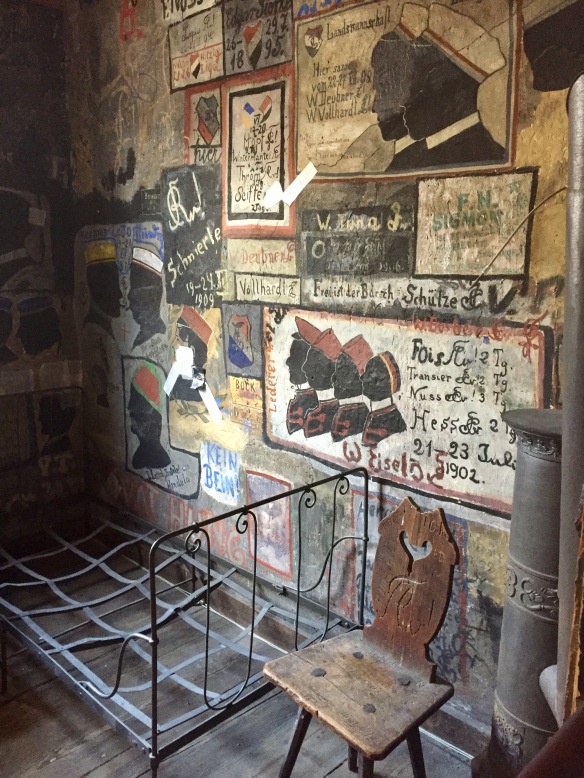
Student Jail
More recent travel narratives focus on the Rhine River. Castles in the Air: A Journey Down the Rhine by Simon Worrall (2013) explores the hillside strongholds that populate the banks of the Rhine River. These castles in medieval times served as toll gates for traffic on the river. If a ship didn’t pay, it could be blown out of the water. And, it appears that there may have been little coordination among the landowners who taxed the waterways. The famous cat and mouse castles—Katz and Maus–were owned by brothers who competed for tolls.
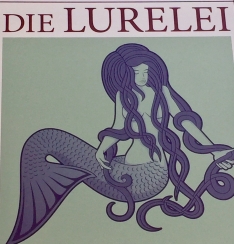
Near the cat and mouse castles is the famous Lorelei—the turn in the river that has caused many shipwrecks. The “Song of the Lorelei” speaks to longing and love. Difficult to comprehend for contemporary visitors, the river separated peoples on opposite sides of the bank. It was rare for them to marry. There are, in fact, very few bridges that span the Rhine.
While the Rhine or the Elba might not seem related to the Mississippi, Germany has a love affair with American Jazz, evidenced in Dresden’s Dixieland Jazz Festival held each May. No bands from the USA are needed; there is a wealth of groups from Europe who perform over the multiple-day festival.
Kurt Vonnegut’s novel that includes the burning of Dresden, Slaughterhouse Five, is a natural choice for a RoadWorks Books. The Women in the Castle also contains a harrowing scene from the Dresden bombing. And, the marks are of the fires are still visible on the reconstructed buildings.
We visited Nuremberg, known for its Nazi war rallies as well as its role in the trials of war criminals from World War II, but committed now to being a city of peace and human rights. Its medieval walls still stand in many parts of the city. The Church of St. Lorenz honors the saint who was martyred on the grill and who is reputed to have quipped, “Turn me over; I’m done on this side.”
Nuremberg is also know as “The Pencil Capital of the World,” for its family factories that produce the well known brands Castell-Faber, Staedler, and Stabilio. The Museum of Industry and Communication has an excellent exhibition on the history of pencil production that dates back to the 18th century. Remember: the pencil was revolutionary at the time, offering a writing implement that was accessible and fairly inexpensive—in contrast to quill and ink. Nuremberg is also home to the artist Albrecht Durer, and his home is a testament to this status during his own lifetime. It is well preserved and well worth a visit.
The pencil is mightier than the sword! 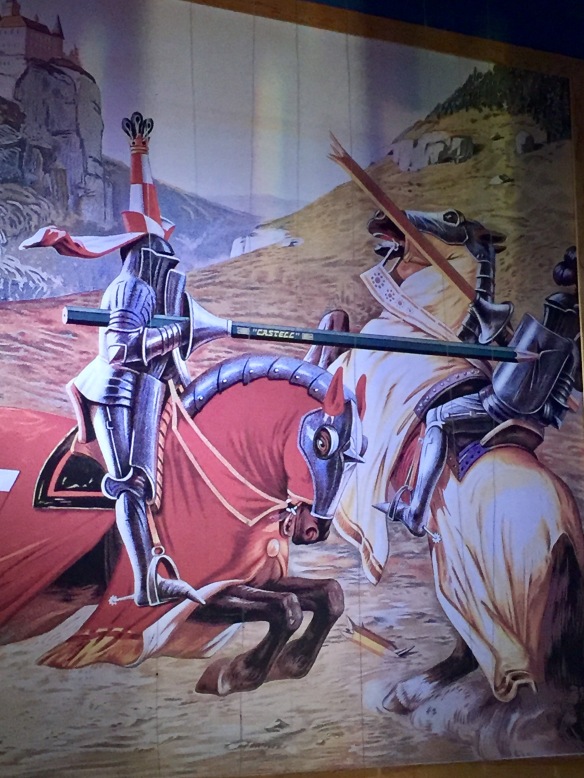
For our Rhine and Moselle River sojourns with forays to the local castles, we stayed in Boppard, a convenient place for ferry hopping and hikes—wandersweg–above the town on the quaint Hunsrücksbahn railroad.
We ventured to the Monastery of Maria Laach (Mary of the Lake), where monks continue in the ancient traditions with a book bindery. The church there is, quite likely, one of the best examples of Romanesque architecture in Europe, and its gardens and shops are also inviting.
I will also plug the excellent Riesling that we found in Germany. In the States, the Riesling that appears on our shelves is often sweet, but the real thing is much better. We can also testify that the cheese and fresh strawberries that we picked up for our lunches and picnics were terrific.
Germany is a country too large, diverse, and rich in culture to encapsulate in a brief blog, and, so often, we rely on the compelling literature of World War II to think about this nation, but we departed feeling that we had uncovered a history of writing and printing that offered a more nuanced view of a nation that has been essential to the cultivation of literacy. Thank you, Gutenberg.
Equal-opportunity pedestrian lights in Dresden.
Traveler’s Note: We traveled to Germany in May; the temperature veered from pleasant to quite cold.
The author biking along the Elba River in Dresden and trying out quill pens in the Museum of Industry and Culture in Nuremberg.
“Never stop exploring”–my North Face suitcase.
